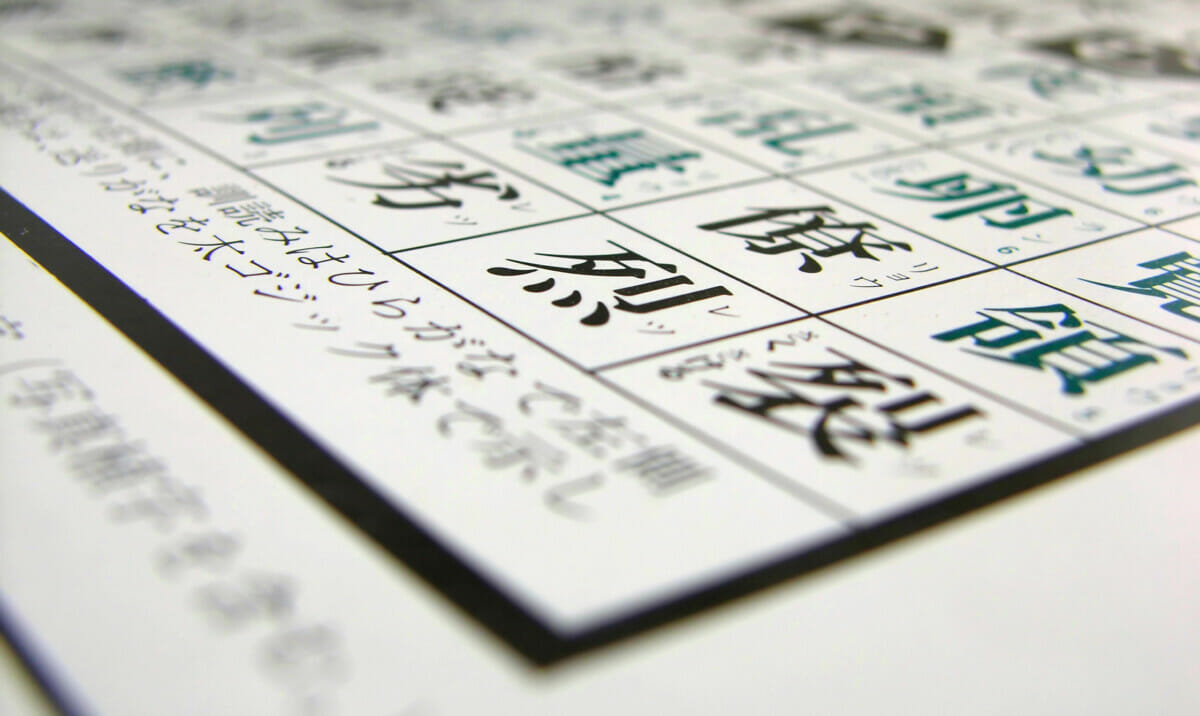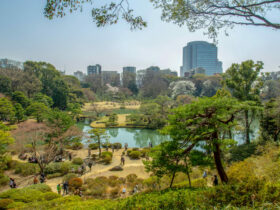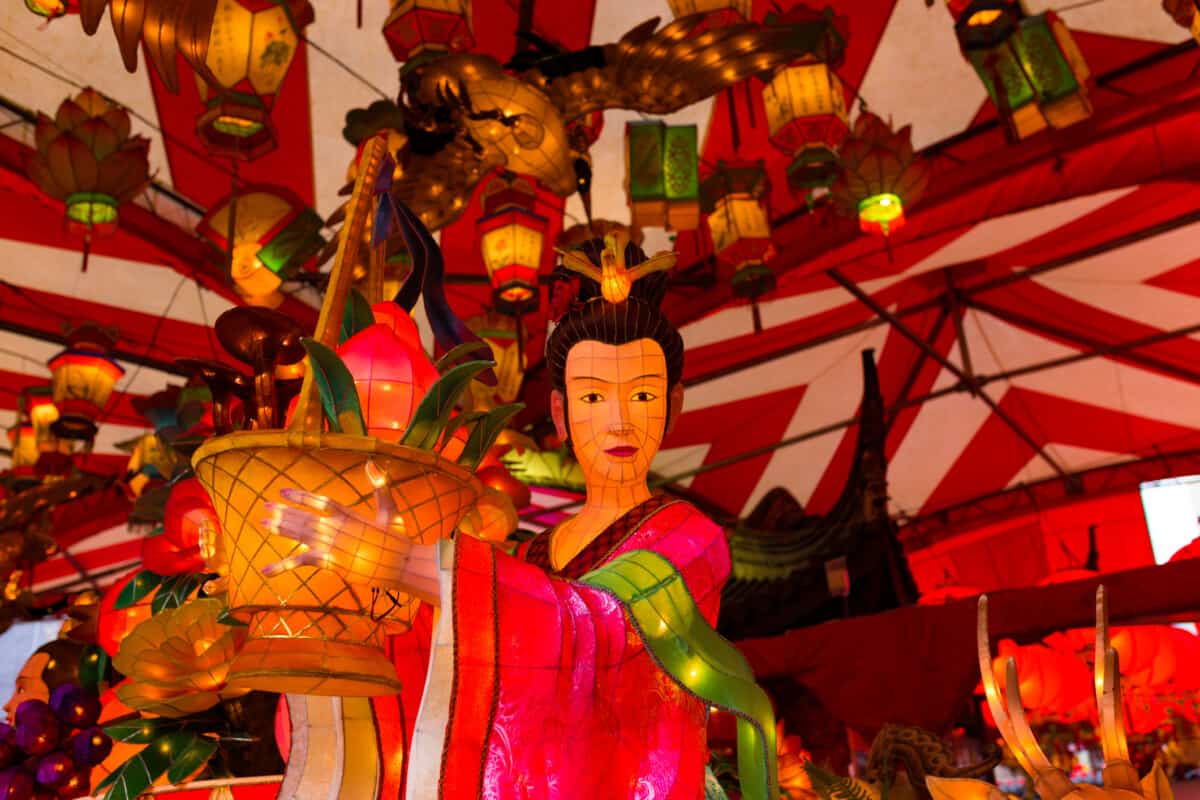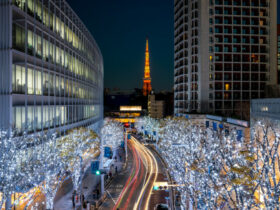Kanji is one of the four scripts used in the Japanese language and it’s the most difficult one to learn. This is because you can have two characters that look very much the same, but the addition, movement, or removal of one little stroke can change the word’s intention entirely. This means that learning kanji requires a keen eye for detail.
- Kanji 漢字
- Hiragana 平仮名
- Katakana 片仮名
- Rōmaji ローマ字
Regardless, it’s one of the most interesting written scripts to study. When you understand radicals versus strokes and how they work together to create kanji, it becomes a completely new world of discovery.
Indeed, it may even help develop a different perspective on the world and language in general.
Radicals
Radicals are symbols/pictures that appear inside each individual kanji character. They often comprise anywhere from one to three (four or even five on occasion).
You could compare them to something similar to the alphabet among the romance languages.

Therefore, radicals are the whole character that represents a word or concept. When you add them together, they change in meaning to create other ideas.
While the symbols don’t necessarily relate to the words they denote, you can mentally visualize them as pictures to remember.
One or Two Radicals
When only one kanji appears also serving as a radical, the character is easy to remember:
- Street: 丁
The kanji for “street” appears much like the intersection of a road. But when additional kanji are present, the meaning of the word changes entirely.
- Rice Paddy: 田
- Street: 丁
Rice Paddy (田) + Street (丁) = Town: 町
In this example above, there are two kanji comprising the character for “town.” The best way to commit this to memory is to relate the image with something you already know.
For instance, when you look at the characters, the character for “rice paddy” is a square-like grid and similar to how we conceptualize the layout of a town.
Three or More Radicals
But what happens when more kanji are part of a whole word? Consider the following that has three radicals to make up the kanji for “electricity,” which also incorporates “rice paddy:”
- Rain: 雨
- Rice Paddy: 田
- Fishhook: 乚
Rain (雨) + Rice Paddy (田) + Fishhook (乚) = Electricity: 電
Strokes
Strokes are the marks required to create a radical within any given kanji. There can be as little as one to as many as eight depending on the character in question.
The word for “big,” as shown below, comprises three strokes but it is only one radical.
- Big: 大
Going back to the examples given for understanding what a radical is, there are many more strokes to create them. Keep in mind that each line is equal to one stroke.
- Rice Paddy (five strokes): 田
- Street (two strokes): 丁
- Town (seven strokes): 町
- Rain (eight strokes): 雨
- Fishhook (one stroke): 乚
- Electricity (13 strokes): 電
Memorizing Radicals vs. Strokes
However, rather than remembering the number of strokes, it’s best to memorize the image and compare it to something similar you already know.
It will be much simpler this way. Once you have the kanji, then you can determine the number of required strokes to write it.

Create a Story
Having said that, not all images will be something with which you can make an association. So, in these instances, using stories or narratives to describe the images will help to deepen your ability to recall kanji. For instance, let’s take the kanji for “electricity:”
Rain (雨) + Rice Paddy (田) + Fishhook (乚) = Electricity: 電
If you stand in the rain amid a rice paddy holding a fishhook, you might get struck by electricity.
Therefore, when you use this kind of mnemonic device, keep the stories/narratives simple and relative.
Also, ensure the story flows in the same way as the order of the kanji (remember that you will write the strokes in the same order as well).
Related Kanji
By now, certainly, you’ve noticed that the kanji for “town” and “electricity” share at least one radical: “rice paddy.” The repetitive use of radicals in various kanji will relate to one another in some way, shape, or form.
Therefore, another way to think of radicals is that they are building blocks to other words that will share a relationship.

However, it stands to note that this does tend to get complicated and understanding can become obscured. This is especially true with more complex ideas and concepts.
But for basic understanding, doing this will help greatly during the initial learning process.
To illustrate, let’s take the radical for “sun,” which can also mean “day” (日):
Sun (日) + Moon (月) = Bright (明)
The sun and moon are bright.
Sun (日) + Temple (寺) = Time [o’clock] (時)
When the sun sets behind the temple, you can tell what time it is.
One (ー) + Sun (日) = One day (ー日)
One dream is to visit the sun one day.
How Strokes Make Learning Kanji Difficult
One thing beginners should understand when first starting out with Japanese is how kanji can look entirely the same but be completely different. In some cases this is slight and in others it’s immense. Peruse the samples below:
| Arrow (矢) | Loss; to Lose or Misplace (失) | |
| Radicals | Bend (ノ) + Big (大) + One (ー) | Bend (ノ) + Big (大) + One (ー) |
| Mnemonic Device | Bend a big one to shoot an arrow. | To bend the big one is a loss. |
Both words for “arrow” or “loss” use the same radicals and require the same five strokes to create it. They look incredibly alike except for one feature: the radical that represents “one.” In “arrow,” it rests at the top of “big.” For “loss,” it traverses the vertical line of “big.”
To put it another way, “one” sits in the center of “bend” for “arrow” whereas “one” connects at the bottom of “bend” for “loss.” Therefore, you can take the narrative a little further but maintain simplicity.
Bend a big one at the top for your arrow but when you lower one, it becomes a loss. So be careful shooting an arrow too far or you will lose it.
Teaching Yourself Kanji
It can be overwhelming, but with patience and persistence, you can learn kanji in no time. But, there’s a method of flow you should follow to make things as easy as possible.
First, start by memorizing all the individual radicals and what they mean; there are 214 of them; all with a standard number.
Then, study-specific kanji and separate the radicals within each character. Next, come up with a little story that will help you remember.

At this point, it might be a good idea to create some flashcards to help you learn by repetition. Be sure to indicate the kanji, its number, its meaning, the radicals comprising it, and its number of strokes.
When you start amassing kanji that are similar to one another, perform another set of stories comparing and contrasting each.
The more you do this, the easier it will become and you’ll remember it quickly. Plus, when you come across unknown words, you’ll at least be able to pick out the radicals to surmise the word’s meaning.










